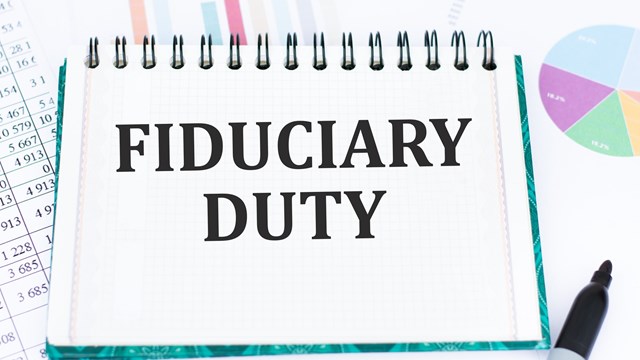The "mortar" that cements together the building blocks for community is communication between homeowners and the leadership team. The following types of communication are extremely important: (a) member surveys—both written and via focus groups; (b) annual meetings; (c) town hall meetings / mid-year report-back to owners (you should receive and encourage owner input); (d) service requests/complaints—use a review and response procedure; (e) community activities, such as National "Night Out"; (f) block parties or holiday parties.
Using Surveys
The use of surveys is probably one of the most effective tools available to an association. A survey can gauge the likes, dislikes, wishes and attitudes of owners. Surveys should be customized to meet the needs of the specific association and should contain some statistical information that can be used for comparative purposes from year to year. Surveys can be used to determine if the owners are in fact in favor of a proposal being promoted by a few. For example, should a children's playground be constructed on the common area adjacent to the recreation facilities, or should the available funds be spent on other named projects? The parents of the children will want the playground, but they may be few in numbers and the playground may not be the preference of the majority of owners. A survey listing the alternatives and costs will give the board an indication of the owners' wishes and will assist the board in its dealings with the minority. The topic, if brought up at the annual meeting, can more easily be dealt with if the wishes of the majority of the owners are known. Reference can be made to the results of the survey. For the survey to be effective, returns should be obtained from a significant number of owners. To facilitate owner response, the survey should not be longer than one page, and should be capable of being folded and mailed. If this is not practical, consider the use of a post card or supply the owners with pre-addressed envelopes. Use of the Business Reply Mail service of the U.S. Post Office will also increase the number of responses.
The Annual Meeting
The annual meeting is a time for celebration. It is a time to focus on the achievements of the association for the past year, a time to recognize the contribution of the volunteer leadership, a time to evaluate the association's goals and objectives, and a time to announce the association's plans for the forthcoming year. It is an opportunity for the board to communicate with the membership and report to the owners on the "State of the Association." It is also an opportunity for the membership to give the board feedback, to help set the association's standards, and to help define the expectations of the owners.
Dealing with a Dissident Minority
As previously stated, the annual meeting should be a time for celebration. Too often, the meeting is adversarial and is conducted in an unpleasant and confrontational atmosphere. Dissidents gain support through misinformation—filling the communication void. The town hall meetings, surveys and score card of accomplishments can minimize the effect of the vociferous few who sometimes control the silent majority. To be effective, these steps need to be planned and executed before the meeting. It should be said that dissent is healthy if handled in a positive and constructive way. It should also be emphasized that dissent is warranted when boards ignore owner rights or operate "in the dark." The business of the association should be conducted in the open and with transparency.
A Town Hall Meeting
As the name implies, the annual meeting is held once per year. As a forum for communicating with owners, this may be inadequate. Very often emotions of owners are pent-up and overflow at the annual meeting. Consideration should be given to providing owners with more frequent opportunities to express their wishes. The use of the Town Hall meeting is ideal for this purpose. The Town Hall meeting is an informal general meeting of owners. It does not require formal notice and a quorum is not necessary. It is merely a gathering of owners to discuss items of mutual concern. The Town Hall meeting should not be confused with a special meeting of the association that is called in accordance with the bylaws of the association to discuss specified business.
Consideration should also be given to inviting non-owner residents (i.e. tenants or subtenants) to the meeting. Although they have no vote, they are members of the community and may play an important role in the social character of the community. Being recognized as part of the community assists in developing community pride, which will facilitate enforcement of the restrictions. To avoid confusion, an agenda should be prepared and the rules of conduct of meetings should be followed.
The use of surveys and Town Hall meetings will assist the board in determining whether the group is a dissident vocal minority or is in fact representative of the majority of owners. If the latter is, in fact, the case, the board should re-evaluate its position and listen more closely to the views of what is no longer a dissident group, but is now the voice of the people.
Score Sheet of Accomplishments
At some time, most associations find themselves confronted by a disgruntled resident or group of residents. They stand on the sidelines and criticize the performance of the board without offering anything constructive. The association leadership should regard this as inevitable and deal with this in its stride.
One of the most effective ways of dealing with this situation is the use of a "score sheet of accomplishments." This is accomplished by announcing all of the association's achievements during the president's state of the association report. At the annual meeting, this celebration of the association's achievements sets the tone for the meeting. Owners who are aware of the association's achievements will likely be the first to support the board against unjustified criticism.
The "score sheet of accomplishments" is a simple form listing the association's achievements. It must be kept current at all times. If a "score sheet of accomplishments" is not maintained, the president will have to review the records of the association for the entire year in an effort to develop the list of achievements. In either event, the president should be encouraged to celebrate the association's achievements at the annual meeting. If surveys were conducted during the year, a copy of the survey results should be attached to the score sheet of accomplishments. The notes of the Town Hall meetings held during the year should also be attached to the "scoresheet."
Community harmony depends on honest and consistent communications amongst all stakeholders in the association. Transparency and openness will assist association boards in building consensus and a true sense of "community." While life in common interest developments has, for some, become a burden, it is possible for associations to enhance the lives of its members by emphasizing its community building purpose.
This is part 2 of an article that was adapted from a speech made to the Utah Chapter of the Community Associations Institute (CAI) by Ronald L. Perl, an attorney with Hill Wallack and the CAI national president.







Leave a Comment